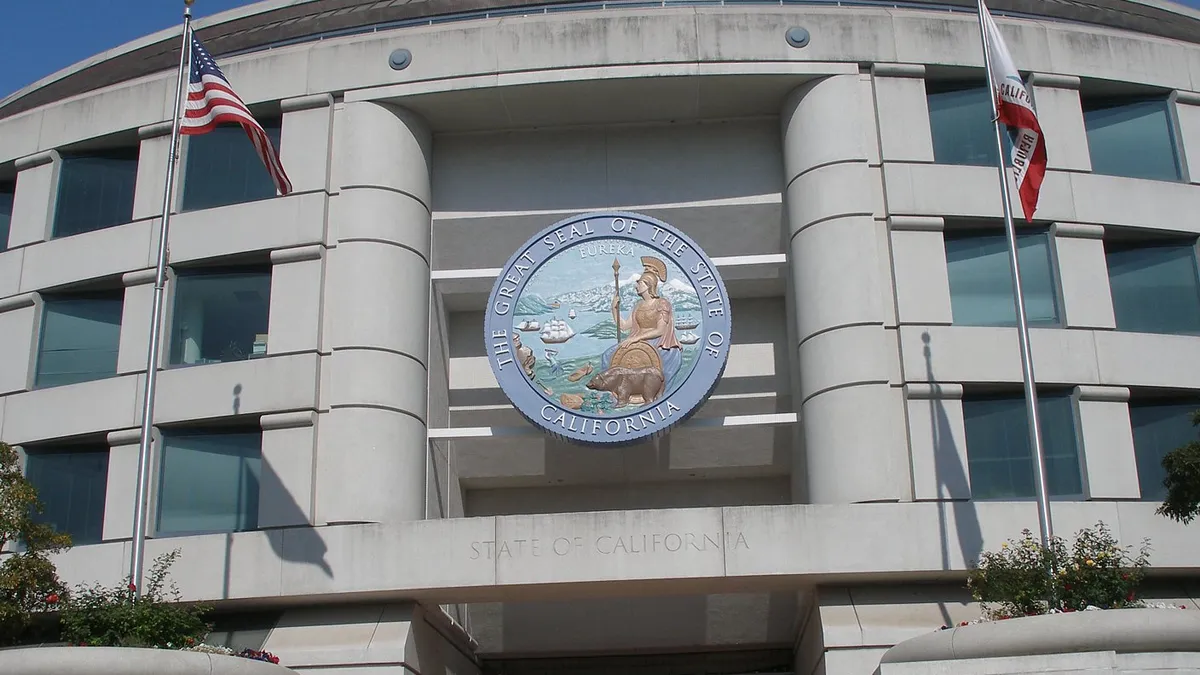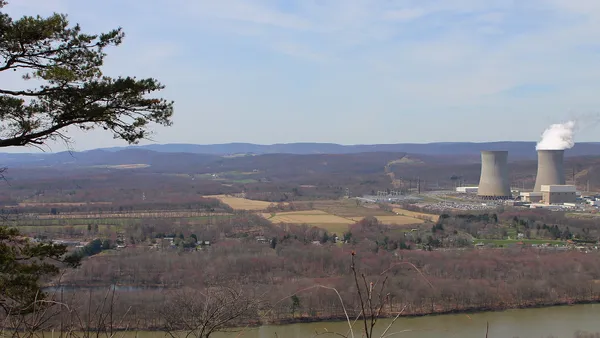UPDATE: March 30, 2020: Commissioner Clifford Rechtschaffen at the California Public Utilities Commission on Friday requested a review of the decision imposing a $200 million cash fine on PG&E, after the utility said the penalty could jeopardize its bankruptcy exit. Rechtschaffen proposed suspending PG&E’s obligation to pay the fine, noting the “unique situation” of its bankruptcy and current financial market turmoil.
Dive Brief:
- The California Public Utilities Commission’s decision to impose a $2.1 billion fine on Pacific Gas & Electric (PG&E) for its role in sparking wildfires in Northern California could jeopardize the company’s equity funding and derail its bankruptcy exit plan, the utility warned in an appeal filed Wednesday.
-
PG&E had negotiated a settlement that included an approximately $1.68 billion payment for several alleged operational violations related to wildfires that occurred in 2017 and 2018. But in February, a CPUC administrative law judge upped that figure to $2.1 billion, citing the "widespread harm" caused by the fires.
- The utility is concerned the decision’s inclusion of a $200 million payment to California’s general fund could jeopardize its equity backstop commitments, totaling $9 billion, which were approved by the bankruptcy court earlier this week as part of a larger financing package.
Dive Insight:
The CPUC last year opened a proceeding to investigate a series of alleged violations that PG&E committed in relation to the 2017 and 2018 Northern California wildfires, ranging from failing to trim trees around its power lines to inadequately inspecting its system, disposing of evidence and incorrect record-keeping. In December, PG&E negotiated a settlement with the agency’s Safety and Enforcement Division, Office of the Safety Advocate and the Coalition of California Utility Employees.
The settlement included $1.68 billion in financial payments — which, if approved, would have been the largest fine imposed by the CPUC for alleged wildfire violations — a majority of which PG&E would not be allowed to recover from ratepayers. The settlement also would have required the utility to invest $50 million in shareholder funds to upgrade its system.
But Administrative Law Judge Sophia Park modified the settlement last month in light of the harm caused by the fires, the chance that PG&E could pass on a chunk of the penalty costs to its customers, as well as possible tax savings stemming from the shareholder payments, according to the decision. It increased the total payout for PG&E shareholders to $2.1 billion, which would include $114 million to beef up its system, as well as a $200 million payment to California’s general fund. PG&E would also have to pass on any tax savings associated with the payments to ratepayers.
The ALJ’s modification "further erodes confidence in the regulatory environment in California," PG&E said in its appeal, adding that the changes "are unworkable, unreasonable, and contrary to the public interest and governing legal standards."
The utility is concerned that the payout could affect its financing package to exit bankruptcy, approved by U.S. Bankruptcy Judge Dennis Montali earlier this week. The commitments are structured such that the backstop parties can back out of the agreement if PG&E pays more than the $25.5 billion it has agreed to, in order to resolve wildfire claims, the utility said. And under the CPUC decision, it would have to pay an additional $200 million to the general fund, putting them over the $25.5B threshold.
"Given the current unprecedented stock market volatility and decline in PG&E’s stock price since the [CPUC decision] was issued, backstop parties may choose to terminate their commitments and deploy their capital in other investments that may now appear more attractive," according to PG&E.
The decision could also heighten investors’ fears about the state’s regulatory environment, PG&E said, adding, "These concerns could not come at a worse time, as PG&E is seeking to raise over $57 billion for its exit from Chapter 11 — the largest capital raise in the history of investor-owned utilities, and one of the largest in corporate history."
PG&E urged regulators to either adopt its original settlement, or tweak the decision in two ways: removing the requirement to pass tax benefits on to customers, and allowing the utility to pay the state’s general fund out of the trust it has set up to compensate wildfire victims.
"We are very disappointed with the [decision] because it creates risk to PG&E’s timely emergence from Chapter 11 and PG&E’s ability to get wildfire victims paid as fast as possible and enable PG&E to participate in the state’s wildfire fund," utility spokesperson Paul Doherty said in an emailed statement, adding that the modifications are also contrary to the CPUC’s precedent of supporting settlements.
Mindy Spatt, communications director for ratepayer advocacy group The Utility Reform Network, said the modified penalty is fairer to PG&E’s ratepayers, and sends a message to the utility.
"A really important part of that decision I think is the tax savings would be refunded to customers," as well as the size of the penalty, she said, adding that TURN thought the previous settlement didn’t "communicate what needed to be communicated."















